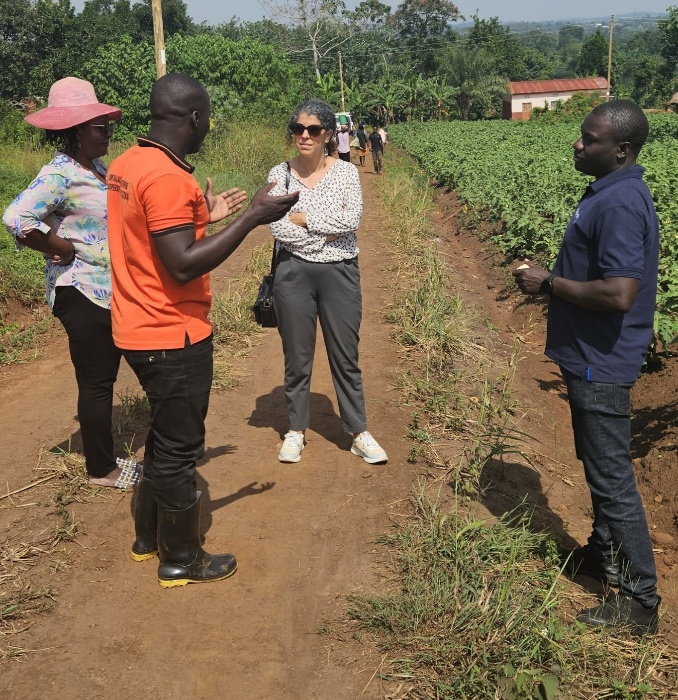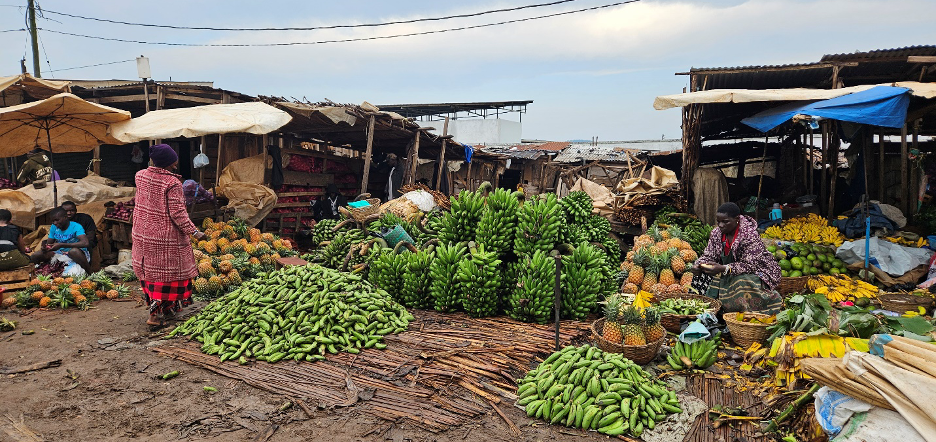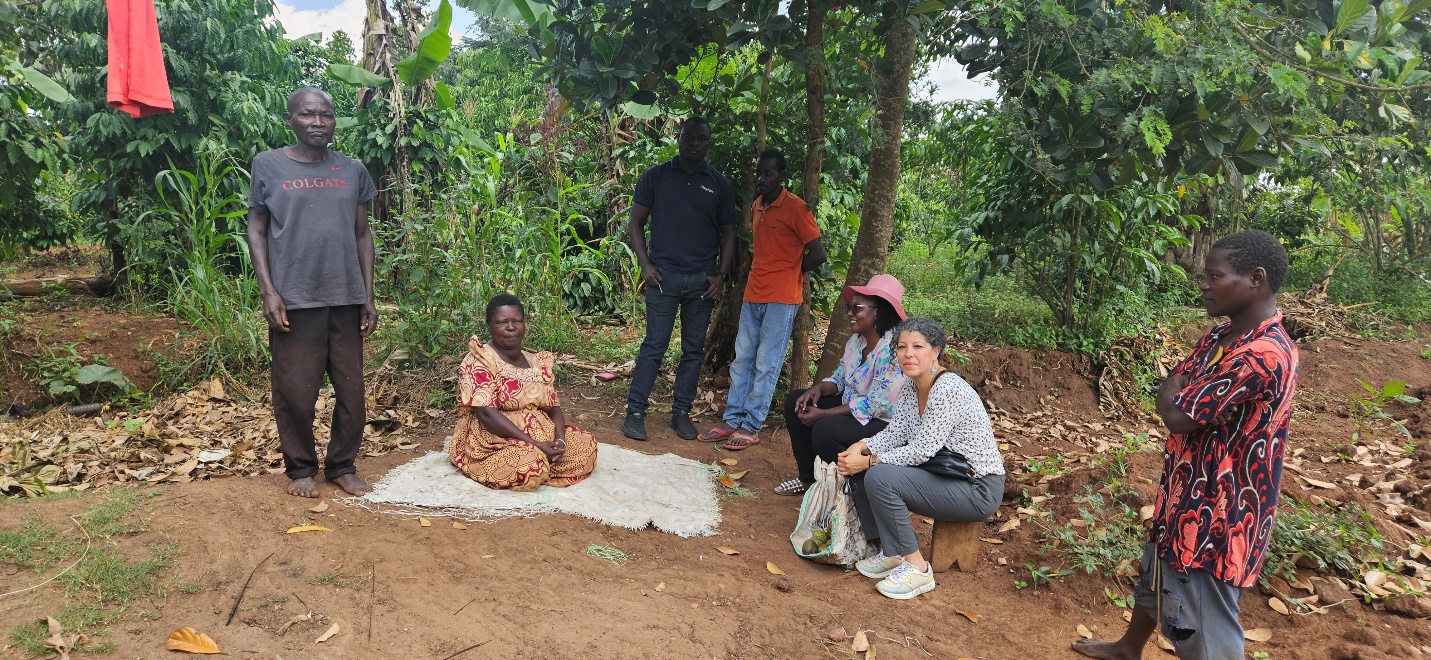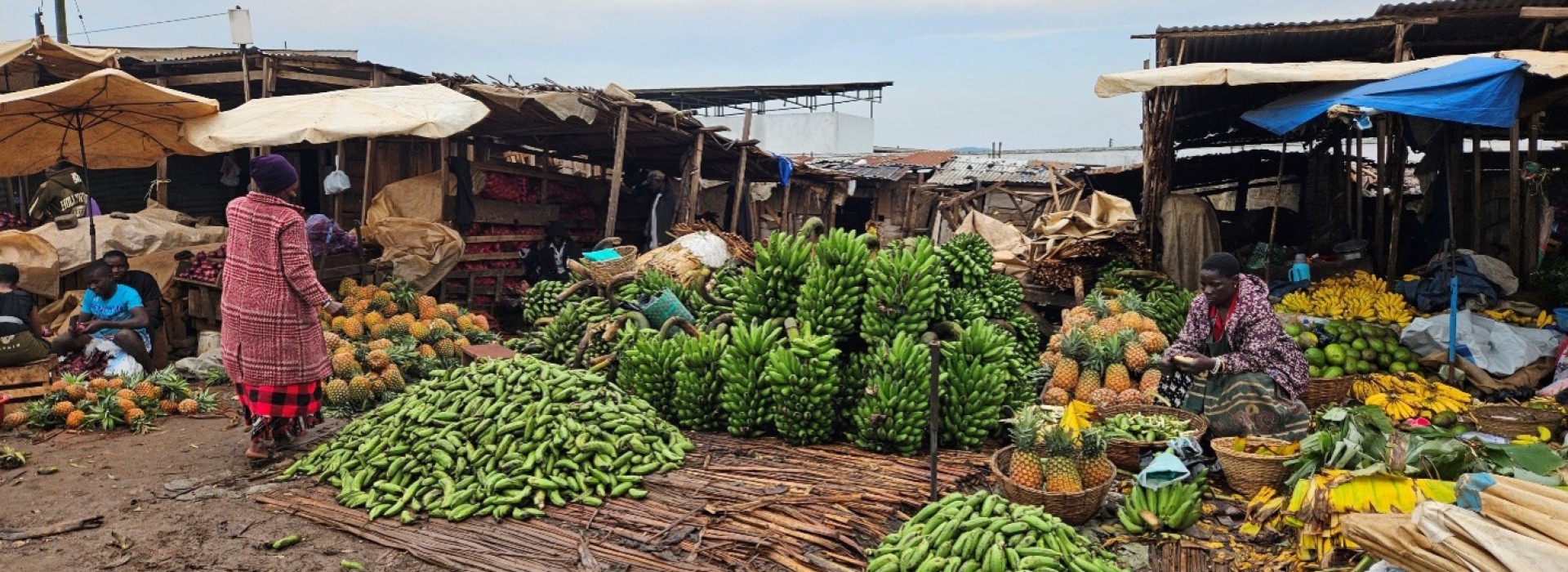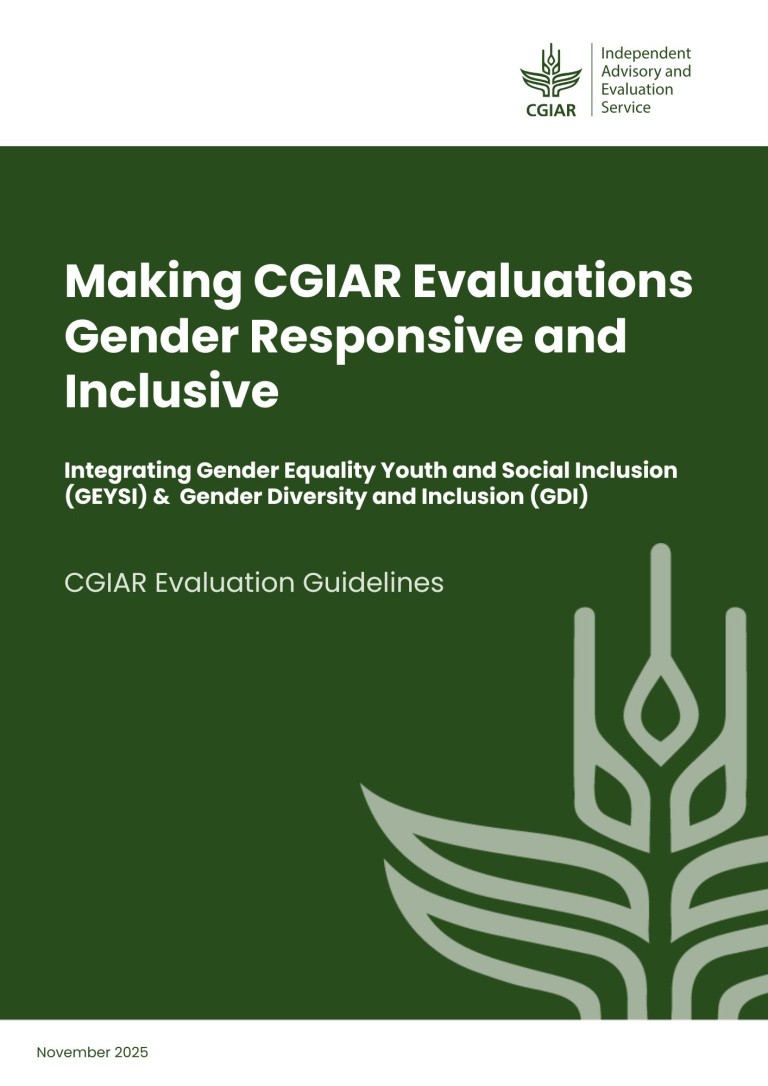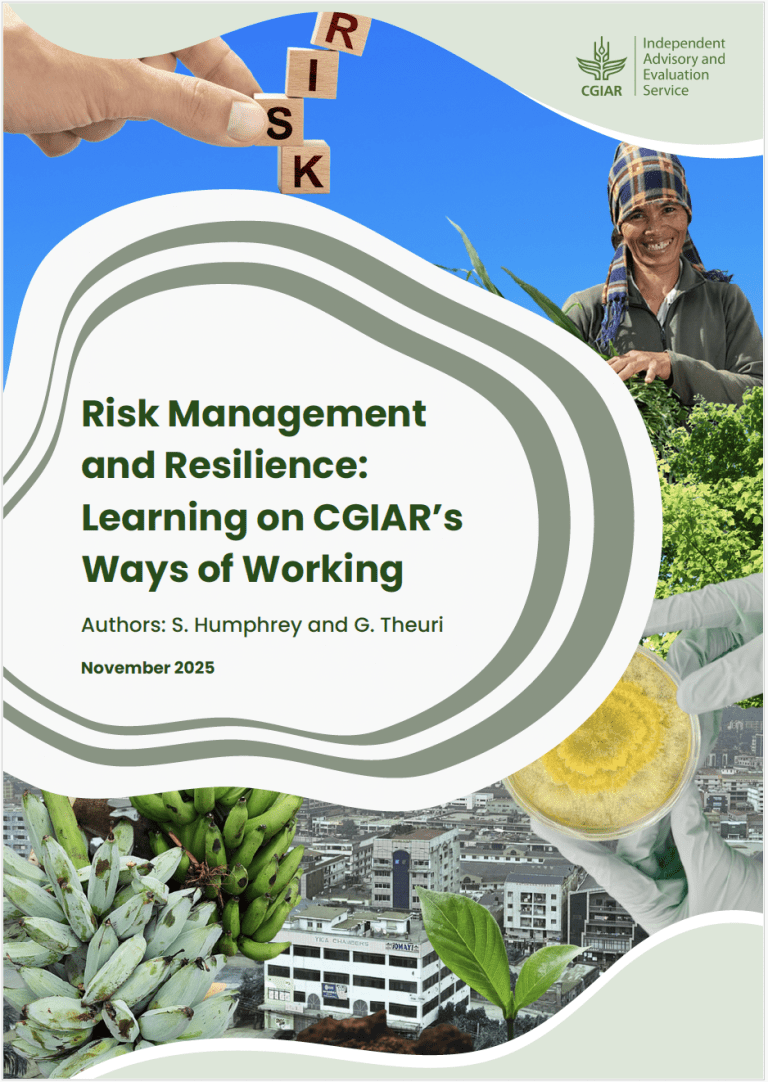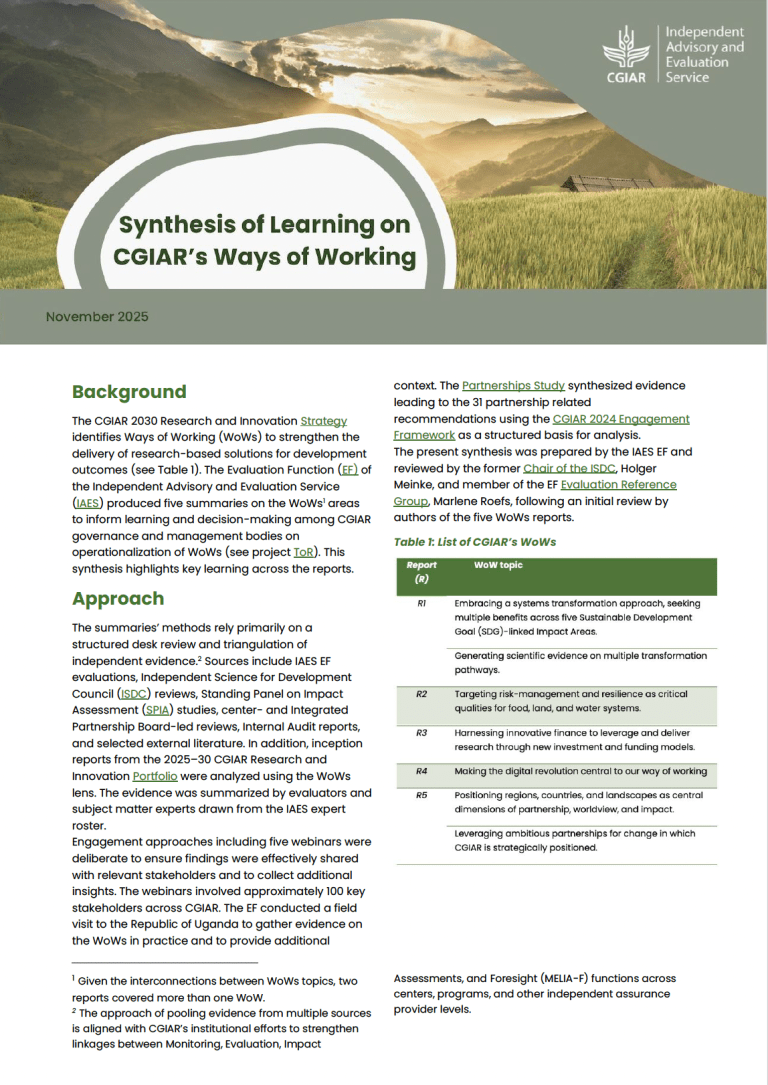The Evaluation Function (EF) team Ibtissem Jouini Senior Evaluation Manager and George, Theuri Evaluation Analyst, headed to Uganda in the last week of June. There, they met with about 50 stakeholders, including CGIAR colleagues and partners active in the country’s agri-food system. In this blog, they share their reflections and insights drawn from these rich and engaging interactions.
Putting the trip into context
Unlike previous field trips conducted by IAES Evaluation Function (EF), this mission to Uganda followed an inclusive approach. In designing the trip, our aim was to engage a diverse range of stakeholders - including CGIAR Center staff, national and international partners, private sector actors, and farmers. Rather than relying on structured interviews, we opted for open-ended focus group discussions and spontaneous conversations, particularly with farmers, to foster candid and grounded exchanges. This visit had a dual purpose. First, we sought to gather concrete, context-rich examples to inform our summaries of learning on CGIAR’s Ways of Working (WoWs) as outlined in the 2025 – 2030 research and innovation strategy. Second, we conducted scoping consultations to assess the readiness and feasibility of a potential country-level evaluation pilot. Through discussions with CGIAR staff and partners, we explored current needs, challenges, opportunities and knowledge gaps - all essential inputs for shaping an evaluation that is relevant to key stakeholders.
The two projects are part of the System Council (SC)-endorsed Multi-Year Evaluation Plan (MYEP as outlined in the 2025-27 work plan for CGIAR's Independent Advisory and Evaluation Service (IAES) (SC/M21/DP5)).
So why Uganda?
For the Ways of Working (WoWs) summaries, it was important to select a country where a diversity of CGIAR programs - delivered through its centers - are actively operating across all seven WoWs topics. For the pilot country evaluations, we applied specific criteria to identify two countries from two regions, in line with our evaluation function workplan. Africa and South Asia were chosen as the initial regions for piloting, with Uganda selected to represent Africa.
Uganda was a strong fit for both objectives. From a macroeconomic perspective, multiple sources including the Food and Agriculture Organization, the Uganda Bureau of Statistics 2019 survey, and One Acre Fund - estimate that more than 70% of the population relies on agriculture for their livelihoods, the majority being smallholder farmers. Beyond the macro context, Uganda also met several practical and strategic criteria: it has maintained political and environmental security over the last three years; stakeholders are accessible and the security situation supports in-country operations. Several CGIAR centres are active in Uganda with six centers having a physical presence and a long-standing history of engagement in the country. Notably both IITA and IFPRI have been operating in Uganda since the 1990s.
In short, Uganda met all key requirements, making it an ideal choice for both the WoWs summaries and pilot country evaluations.
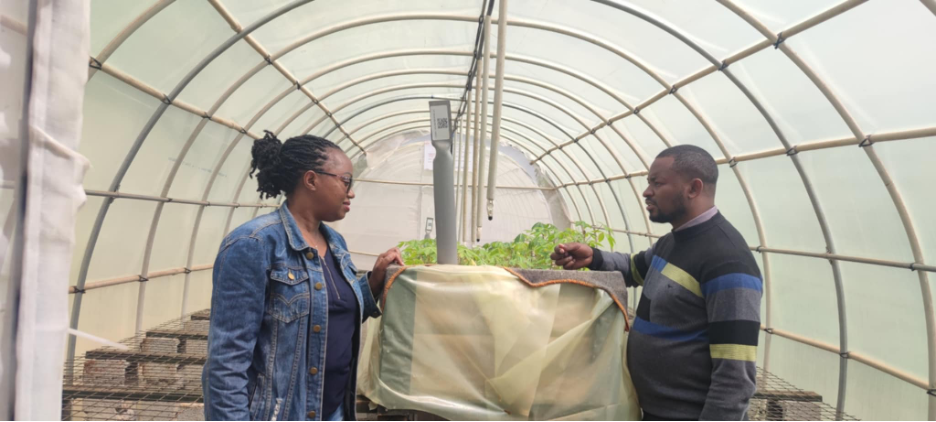
In addition, the Standing Panel on Impact Assessment (SPIA) recently released a country study on Uganda (report) highlighting an agricultural sector marked by both diversity and stress. This presented a timely opportunity to build on existing efforts and draw upon the SPIA study as a credible and robust source for triangulating findings from the upcoming Uganda country evaluation. While SPIA country studies assess the reach and adoption of CGIAR innovations, the country evaluations will complement this by generating evidence on the effectiveness and sustainability of CGIAR integrated partnership model at the country level.
The preselection of the second country in South Asia was guided by additional criteria, such as the presence of a hosting agreement with at least one CGIAR center headquarters and the presence of a CGIAR Genebank, considered a flagship asset reflecting CGIAR’s added value. Based on these considerations, the Philippines emerged as a good fit for evaluation. The deliberate diversification of selection criteria was intended to generate rich, context-specific insights that will inform a tailored approach to future country evaluations.
| How the 2030 CGIAR Strategy will be implemented-seven WoWs |
| Embracing a systems transformation approach, seeking multiple benefits across five Sustainable Development Goal (SDG)-linked Impact Areas. |
| Generating scientific evidence on multiple transformation pathways. |
| Positioning regions, countries, and landscapes as central dimensions of partnership, worldview, and impact (partially covered by Partnerships Study). |
| Harnessing innovative finance to leverage and deliver research through new investment and funding models. |
| Targeting risk-management and resilience as critical qualities for food, land, and water systems. |
| Making the digital revolution central to our WoW. |
| Leveraging ambitious partnerships for change in which CGIAR is strategically positioned. |
Source: CGIAR 2030 Research and Innovation Strategy
The core of the conversation: capacity sharing, funding, and collaboration across centers
We held insightful discussions with six CGIAR centers operating in Uganda including with the Alliance for Bioversity International and CIAT, ILRI, IFPRI, CIP, IITA, AfricaRice; National Partners – NARO; International Partners - JICA, private sector – EzyAgric; Uganda Development Bank along with farmers.
CGIAR colleagues and partners emphasized the important role that centers play in developing capacity by hosting Master's and Doctoral students. These graduates often go on to work with NARES, especially the National Agriculture Research Organization (NARO), as well as in public and private sectors. However, despite the significant investment made, the outcomes of this capacity-building effort—particularly its effect on the quality of institutional collaboration—remain underexplored. This was also a finding made by Science Groups evaluations conducted by our office last year.
One participant noted “The CGIAR was big in capacity building. Current top scientists now were trained through the CGIAR system.”
Currently, there is no centralized database to track current and former students or their contributions within CGIAR, in government, or elsewhere. Yet, several CGIAR colleagues noted that the number of students supervised is part of their annual performance assessment, which could provide a useful entry point for compiling and maintaining such information.

Given the shrinking space for traditional donor funding, resource mobilization and financing were two topics of major concern. Most of the scientists we spoke to said they engage in resource mobilization mainly through proposal writing. However, many felt that this process takes away valuable time from conducting actual scientific research. The underlying questions remained going forward how do we keep financing research and which innovative financing mechanisms are most suitable and effective in Uganda and by extension elsewhere?
We also discussed collaborations between CGIAR centers and partners. We wanted to find out how easy it was to form collaborations; what challenges hindered such collaborations and what opportunities existed. Collaboration between CGIAR centers was found to be minimal. In the past, before the role of country convener was rendered vacant, there was some collaboration between and among centers and had even started the process of developing a CGIAR country engagement strategy. The vision was to operationalize the OneCGIAR and speak as a united front. Unfortunately, this vision did not materialize and collaboration among centers has since suffered setbacks.
One participant noted with concern “The role for country conveners was not well funded. They played a key role in presenting CGIAR’s work. If funders were interested in a country, conveners were able to convey the information. One recommendation was that the role was deemed important and should be funded. A strategy for a country cannot be implemented without anyone leading the work.”
Finding the best engagement model with farmers
While the Evaluation Function delivers and supports process and performance evaluations that enhance accountability, inform decision making, and generate lessons to improve quality and effectiveness of agricultural research for development outcomes, this work is not carried out in isolation. At the heart of CGIAR’s work are farmers, the ultimate users of CGIAR innovations. In fact, our visit and discussions with farmers was facilitated by Susan Ajambo an associate scientist working in performance, innovation and strategic analysis for impact (PISA4) at the Alliance for Bioversity and CIAT and Stewart Ategeka, an agronomist with EzyAgric, a digital private partner working with the Alliance for Bioversity. Our discussions were meant to achieve the following: provide insights into the accessibility and relevance of targeting farmers for the evaluation next year.
We also gathered concrete examples on how ways of working are being operationalized at farm level. For instance, the selected group of farmers from the app users we met with, reported that they are using digital solutions from EzyAgric to access genuine farm inputs, access credible extension services right from the app, and also access digital marketplace for their produce. We were shown practical examples of collaboration between CGIAR centers and the private sector that helped facilitate dissemination and scaling of research innovations. Informal conversations with various farmers, particularly women, revealed valuable insights into the challenges they face.
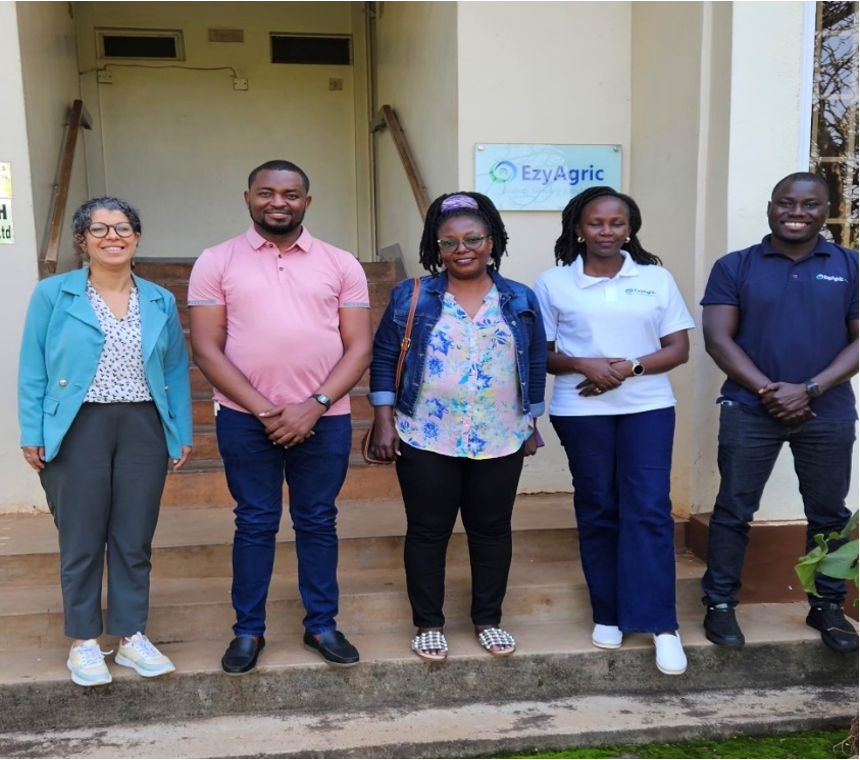
What did we learn as potential foci for the Uganda country evaluation?
As noted earlier, one of our objectives was to explore the possibility of piloting a country-level evaluation. To this end, we identified and collected relevant topics with strong potential for in-depth analysis. We have already touched on some of these topics in this discussion.
- Capacity sharing– it was clearly highlighted that CGIAR has made significant contributions to building the capacities of government research professionals through National Agricultural Research and Extension Systems (NAREs). A deeper exploration of this work could uncover hidden outcomes and help strengthen interdisciplinary research by leveraging locally developed capacities.
- Resource mobilization and innovative financing – since funding is shrinking, CGIAR should double its efforts to invest in new and innovative ways of raising research funding. Participants flagged a pressing issue: funding cuts are forcing some CGIAR centers to downsize key social science capacities, undermining CGIAR’s commitment to integrated, interdisciplinary and transdisciplinary research that delivers multiple benefits. Further exploration into which resource mobilizations mechanisms are in place and their value would greatly benefit CGIAR’s fundraising efforts in Uganda. Co-creation and co-design with NAREs – several opportunities and challenges were mentioned during the discussions. Diving deeper into understanding the current practice of establishing and leveraging collaborations would benefit and complement the efforts the CGIAR is making to cement existing partnerships.
- Scaling approaches – there is a gap in knowledge about what happens after CGIAR releases innovations, which is also stated in SPIA country study report. The lack of monitoring and evaluation post release hinders CGIAR from learning from these scaling efforts. Further analysis will throw light on the challenges and opportunities involved in building a robust monitoring process, enabling CGIAR to learn and make informed decisions.
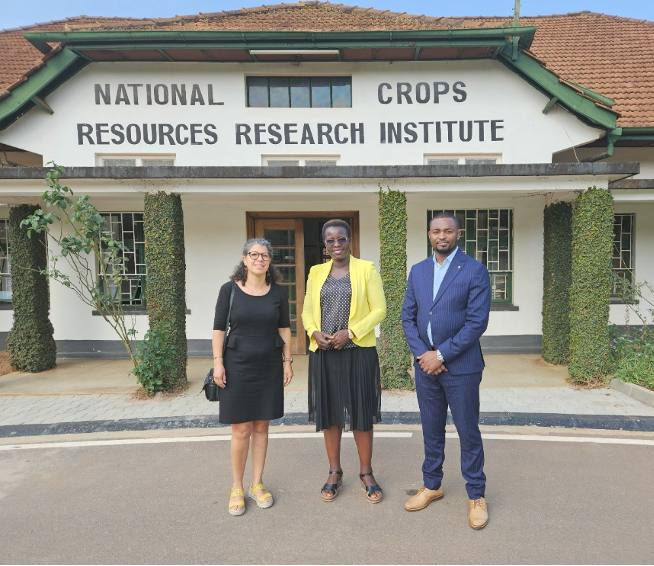
So, what is next?
Back at our desks, we began by sharing the examples we had gathered with our lead consultants developing the five ways of working summaries. These real-world insights helped illustrate key concepts in action and are now being woven into upcoming reports soon to be published on our website.
For the Uganda country evaluation, we are drafting the terms of reference informed by our findings and ongoing consultations to refine the design. Next up: the Philippines—where we'll conduct a similar exercise to assess readiness and knowledge needs for the evaluation.
Stay tuned!
